Introduction to Salmon Bites
Salmon bites, a culinary delight that combines the richness of salmon with the convenience of bite-sized servings, have become a favorite for many. Whether you’re a seasoned chef or a cooking novice, this guide will take you through the journey of creating the perfect salmon bites recipe. From selecting the right type of salmon to mastering the cooking techniques, we’ve got you covered.
The Appeal of Salmon Bites
Salmon bites offer a unique experience that stands out in the world of appetizers and snacks. Their appeal lies in their versatility – they can be a star at a fancy dinner party or a simple, healthy snack for a family gathering. The combination of the rich, oily texture of salmon with various seasonings and cooking methods makes them a hit across different palates and culinary preferences.
What Makes Salmon Bites Special?
What sets salmon bites apart is their perfect balance of flavor and nutrition. Salmon is renowned for its high omega-3 fatty acid content, making it a heart-healthy choice. When transformed into bite-sized pieces, it becomes an easy-to-eat, fun, and elegant dish. The simplicity of the recipe allows the natural flavors of the salmon to shine through, while also providing a canvas for a range of seasonings and sauces.
In the next sections, we’ll delve into the intricacies of selecting the best salmon, preparing your kitchen, and walking you through the basic salmon bites recipe, along with tips to enhance its flavor and presentation. Get ready to embark on a culinary adventure that promises to be as rewarding as it is delicious!
Selecting the Right Salmon
When it comes to making salmon bites, the quality and type of salmon you choose can make a significant difference in the flavor and texture of the final dish. Selecting the right salmon is a crucial step in ensuring your salmon bites are not only delicious but also healthy and sustainable.
Types of Salmon for Bites
There are several types of salmon available in the market, each with its unique flavor profile and texture. The most common types include Atlantic salmon, Pacific salmon (like King, Sockeye, and Coho), and farm-raised varieties. For salmon bites, you want a type that is flavorful and has a good fat content to keep the bites moist and tender. Sockeye and King salmon are excellent choices due to their rich flavor and firm texture.
Fresh vs Frozen Salmon
The debate between fresh and frozen salmon is ongoing, but both can be great for making salmon bites. Many people often prefer fresh salmon for its texture and flavor. However, high-quality frozen salmon can match this quality, especially if workers froze it shortly after catching it. The key lies in selecting salmon that has received proper handling and storage. If you choose to use frozen salmon, make sure to defrost it thoroughly and pat it dry before cooking.
When purchasing salmon, look for bright, moist (but not slimy) flesh. The fish should smell fresh and mild, not fishy. If you’re buying a whole fish, the eyes should be clear and bright. For sustainability, consider choosing salmon that is certified by organizations like Marine Stewardship Council (MSC).
In the next section, we’ll discuss how to prepare your kitchen for making salmon bites, including the essential tools and ingredients you’ll need.
Preparing Your Kitchen for Salmon Bites
Getting your kitchen ready for making the salmon bites recipe is as important as the cooking process itself. A well-prepared kitchen ensures a smooth, enjoyable cooking experience and contributes to the success of your dish. Here’s how to set up your kitchen for this delightful recipe.
Essential Tools and Ingredients
First, gather all the necessary tools and ingredients. You’ll need a sharp knife for cutting the salmon into bite-sized pieces, a cutting board, mixing bowls, and a baking sheet or skillet, depending on your chosen cooking method. For the ingredients, apart from the salmon, ensure you have all the seasonings and additional components the recipe calls for. This might include herbs, spices, breadcrumbs, or sauces.
Pre-Preparation Tips
Before you start, it’s crucial to organize your workspace. Clear your counters to give yourself ample room to work. If you’re using fresh salmon, prepare it by removing the skin and any bones, then cutting it into even, bite-sized pieces. This ensures that each salmon bite cooks evenly and has the perfect texture.
If your salmon bites recipe includes a marinade or seasoning blend, prepare this in advance so the flavors have time to meld together. Marinating the salmon for even a short time can infuse it with more flavor.
Lastly, preheat your oven or skillet as required by your recipe. This step is crucial because cooking the salmon bites at the right temperature is key to achieving a crispy exterior and a tender, moist interior.
With these preparations in place, you’re now ready to embark on the delightful journey of making salmon bites, a recipe that promises to be as enjoyable to prepare as it is to savor.
The Basic Salmon Bites Recipe
Creating the perfect salmon bites recipe is an art that combines simplicity with flavor. This basic recipe is designed to highlight the natural taste of salmon, enhanced with just the right seasonings to make each bite unforgettable.
Ingredients:
- 1 lb fresh or high-quality frozen salmon, skin removed
- 2 tablespoons olive oil
- 1 tablespoon lemon juice
- 1 garlic clove, minced
- 1 teaspoon dried dill or parsley
- Salt and pepper, to taste
- Optional: 1 teaspoon honey or maple syrup for a touch of sweetness
Instructions:
- Preparation: Begin by preheating your oven to 375°F (190°C) if you’re baking the salmon bites. If you’re using frozen salmon, ensure it’s fully thawed and pat it dry with paper towels.
- Cut the Salmon: Slice the salmon into even, bite-sized pieces, about 1-inch cubes. This size is ideal for ensuring that each piece cooks evenly and is easy to eat.
- Marinate: In a mixing bowl, whisk together olive oil, lemon juice, minced garlic, dill or parsley, and, if using, honey or maple syrup. Season this marinade with salt and pepper to taste. Add the salmon pieces to the bowl, gently tossing them to ensure they are well-coated with the marinade. Let them sit for about 10-15 minutes to absorb the flavors.
- Cook: Arrange the salmon pieces on a greased baking sheet, ensuring they are not touching each other. If you prefer, you can also cook them in a skillet over medium heat. For baking, place them in the preheated oven and bake for 12-15 minutes or until the salmon is cooked through and slightly golden. If using a skillet, cook them for about 3-4 minutes on each side.
- Serve: Once cooked, remove the salmon bites from the oven or skillet and let them rest for a couple of minutes. Serve them warm, garnished with additional herbs or a squeeze of lemon, if desired.
This basic salmon bites recipe is a great starting point for anyone looking to enjoy the natural flavors of salmon in a simple, yet delicious way. Feel free to experiment with additional herbs, spices, or sauces to tailor the recipe to your taste.
Check this dessert recipe Toll House Cookie Recipe
Nutritional Benefits of Salmon
The salmon bites recipe not only offers a delightful taste experience but also brings a wealth of nutritional benefits. Salmon, a key ingredient in this recipe, is a powerhouse of essential nutrients that contribute significantly to a healthy diet.
Rich in Omega-3 Fatty Acids: Salmon is renowned for its high content of omega-3 fatty acids, which are crucial for heart health. These fats help reduce inflammation, lower blood pressure, and decrease risk factors for diseases.
Protein-Packed: Each serving of salmon provides a substantial amount of high-quality protein, essential for building and repairing tissues, and maintaining muscle mass.
Vitamin and Mineral Rich: Salmon is an excellent source of B vitamins, which are vital for energy production, controlling inflammation, and protecting heart and brain health. It’s also rich in potassium, selenium, and antioxidants.
Weight Management: Incorporating salmon into your diet can aid in weight management. Its high protein content and healthy fats promote satiety, helping to reduce overall calorie intake.
Brain Health: Regular consumption of salmon, due to its omega-3 content, is associated with decreased rates of cognitive decline and a lower risk of age-related mental disorders.
The salmon bites recipe is not just a treat for your taste buds but also a step towards a healthier lifestyle. By including this nutrient-dense fish in your diet, you’re choosing a meal that supports overall health and well-being.
Pairing with Side Dishes for Salmon Bites Recipe
When you prepare the salmon bites recipe, choosing the right side dishes can elevate this delightful meal to a new level of culinary enjoyment. The key is to select sides that complement the rich, savory flavor of the salmon without overpowering it.
Complementary Flavors
A fresh, zesty salad works wonders alongside salmon bites. Ingredients like mixed greens, cherry tomatoes, and a light vinaigrette offer a refreshing contrast to the richness of the salmon. For a heartier option, consider roasted vegetables like asparagus, bell peppers, or Brussels sprouts. Their natural sweetness and earthy tones pair beautifully with the savory salmon.
Healthy and Delicious Sides
Quinoa or brown rice are excellent choices for adding a wholesome, nutritious element to your meal. These grains not only provide a satisfying texture but also absorb the flavors of the salmon bites, creating a harmonious balance in each bite. For a low-carb alternative, cauliflower rice or spiralized zucchini noodles are fantastic options that keep the meal light yet fulfilling.
Culinary Creativity
Don’t hesitate to get creative with your side dishes. A light pasta salad with a lemon-herb dressing or a creamy risotto can add an elegant touch to your salmon bites meal. The key is to maintain a balance of flavors and textures that complement the main dish without competing with it.
By thoughtfully pairing your salmon bites with the right side dishes, you can create a meal that is not only delicious but also visually appealing and nutritionally balanced. This approach turns the simple salmon bites recipe into a complete, satisfying dining experience.
Cooking Techniques for Perfect Salmon Bites
Mastering the cooking techniques for the salmon bites recipe is essential to ensure each bite is juicy, flavorful, and perfectly cooked. Whether you prefer baking or grilling, each method has its unique way of enhancing the salmon’s natural flavors.
Grilling for a Smoky Flavor
Grilling salmon bites adds a delightful smoky flavor that’s hard to replicate with other cooking methods. Preheat your grill to a medium-high temperature and lightly oil the grates to prevent sticking. Skewer the marinated salmon pieces or place them in a grill basket. Grill them for about 3-4 minutes on each side, until they have a slight char and are cooked through. This method not only imparts a smoky flavor but also gives the salmon bites a beautiful, appetizing appearance.
Baking for Ease and Consistency
Baking is a fuss-free method that delivers consistently delicious results. Preheat your oven to around 375°F (190°C). Arrange the salmon bites on a lightly greased baking sheet, ensuring they don’t touch each other for even cooking. Bake for 12-15 minutes, or until the salmon is cooked through and slightly golden. This method is excellent for retaining the moisture and tenderness of the salmon, making it a foolproof technique for any home cook.
Tips for Juicy and Flavorful Bites
Regardless of the cooking method, there are a few tips to ensure your salmon bites turn out perfect every time. First, avoid overcooking the salmon, as it can become dry and tough. Second, let the salmon bites rest for a few minutes after cooking; this allows the juices to redistribute, ensuring each bite is moist and flavorful.
By mastering these cooking techniques, you can create the perfect salmon bites recipe that’s sure to impress your guests with its taste and presentation.
Salmon Bites for Special Diets
Adapting the salmon bites recipe to cater to special diets is straightforward and ensures everyone can enjoy this delicious dish. Whether your guests follow gluten-free, low-carb, or allergy-friendly diets, you can easily modify the recipe to suit their needs.
Gluten-Free and Low-Carb Options
For a gluten-free version of the salmon bites recipe, replace any breadcrumbs or wheat-based ingredients with gluten-free alternatives. Almond flour or crushed gluten-free crackers make excellent coatings for a crispy exterior. For those on a low-carb diet, focus on herbs and spices for flavoring instead of coatings or batters. You can also serve the salmon bites with low-carb sides like steamed vegetables or salads.
Allergy-Friendly Alternatives
If you’re catering to guests with allergies, it’s crucial to understand their specific dietary restrictions. For example, if someone is allergic to garlic, you can use herbs like dill or parsley for seasoning instead. Always check labels on store-bought ingredients to ensure they don’t contain allergens.
Creative Substitutions
Don’t hesitate to get creative with substitutions. Use olive oil instead of butter for dairy-free diets, or incorporate plant-based seasonings for those avoiding animal products. The versatility of the salmon bites recipe allows for numerous adaptations while still maintaining the delicious flavor and appeal of the dish.
By considering these special dietary needs, you can make the salmon bites recipe a welcoming and inclusive option for all your guests, ensuring everyone enjoys this tasty and nutritious dish.
The History of Salmon in Cuisine
The history of salmon in cuisine is as rich and diverse as the salmon bites recipe itself. This prized fish has held a place of honor in the culinary traditions of many cultures around the world, evolving over centuries into a beloved ingredient in countless dishes.
Ancient Beginnings
Salmon’s culinary journey began thousands of years ago. Indigenous peoples of the Pacific Northwest, for instance, have long revered salmon. They traditionally caught and prepared it using methods like smoking and drying, techniques that are still popular today. These methods not only preserved the fish but also imparted unique flavors, making salmon a staple in their diet.
European Influence
In Europe, salmon became a symbol of luxury and opulence. Medieval banquets often featured this prized fish, served in elaborate preparations to showcase wealth and culinary skill. Over time, salmon recipes evolved, with each region adding its unique twist, reflecting local tastes and ingredients.
Modern Culinary Scene
In modern cuisine, salmon has become a versatile and widely-used ingredient. It features in everything from simple, home-cooked meals to elaborate gourmet dishes. The development of aquaculture has made salmon more accessible, allowing people worldwide to enjoy this fish in various forms, including the popular salmon bites recipe.
A Global Ingredient
Today, salmon’s popularity spans the globe, with each culture infusing it with local flavors and cooking techniques. Whether grilled, smoked, baked, or turned into delectable salmon bites, this fish continues to be a favorite among chefs and home cooks alike, celebrated for its flavor, nutritional value, and versatility.
The salmon bites recipe is a testament to this rich history, combining traditional flavors with modern culinary techniques to create a dish that is both timeless and contemporary.
FAQs About Salmon Bites
What are Salmon Bites Made Of?
The salmon bites recipe, a favorite among seafood enthusiasts, consists of simple yet flavorful ingredients that come together to create a delightful appetizer or main dish. At its core, this recipe features salmon as the star ingredient, complemented by a variety of seasonings and coatings that enhance its natural taste and texture.
Key Ingredients
- Salmon: The primary ingredient, salmon, is usually fresh or high-quality frozen, cut into bite-sized pieces. The type of salmon (like Sockeye, King, or Atlantic) can vary based on preference and availability.
- Marinade and Seasonings: To infuse the salmon with flavor, a marinade typically includes olive oil, lemon juice, and garlic. Seasonings like dill, parsley, salt, and pepper add depth and aroma to the dish.
- Coating: For a crispy exterior, some recipes call for a light coating. This can be breadcrumbs, panko, or a gluten-free alternative for those with dietary restrictions. The coating is often seasoned to complement the salmon’s flavor.
- Optional Additions: Depending on the recipe variation, ingredients like honey or maple syrup might be included for a hint of sweetness. Some versions also incorporate spicy elements like cayenne pepper or mustard for an extra kick.
Preparation and Cooking
Preparing salmon bites involves marinating the salmon pieces, coating them (if desired), and then cooking them to perfection. The cooking method can vary – baking and grilling are popular choices, each lending a distinct texture and flavor to the dish.
In essence, salmon bites are a harmonious blend of quality salmon and carefully chosen seasonings and coatings. This combination results in a dish that is not only delicious but also versatile, easily adaptable to different tastes and dietary needs.
How Long Can You Marinate Salmon for the Salmon Bites Recipe?
When preparing the salmon bites recipe, marinating the salmon is a crucial step that infuses it with flavor. However, the duration of marination is key to ensuring the fish retains its texture and taste. The ideal marinating time for salmon bites varies, but there are general guidelines to follow for optimal results.
Ideal Marinating Time
For most salmon bites recipes, marinating the fish for 30 minutes to an hour is sufficient. This time frame allows the salmon to absorb the flavors of the marinade without the acidic components, such as lemon juice or vinegar, starting to “cook” or break down the fish’s delicate texture.
Maximum Marinating Time
It’s important not to marinate salmon for too long. As a general rule, you should not marinate salmon for more than 4 hours. Over-marinating can lead to a mushy texture, as the acids in the marinade can start to denature the proteins in the fish, affecting its firmness and overall quality.
Quick Marination for Flavor
If you’re short on time, even a brief 15-minute marination can impart a noticeable flavor to the salmon. This is particularly true if the marinade is well-seasoned or includes robust flavors.
Marinating Frozen Salmon
If you’re using frozen salmon for your salmon bites recipe, you can marinate it while it’s defrosting in the refrigerator. This process can take several hours, but it’s a convenient way to marinate and thaw the salmon simultaneously.
In summary, while marinating is a vital step in preparing salmon bites, it’s essential to adhere to the recommended marinating times. This ensures that the salmon remains flavorful and retains its desired texture, making your salmon bites recipe a sure success.
How to Cook Salmon with Gordon Ramsay’s Techniques
Cooking salmon following Gordon Ramsay’s techniques can elevate your salmon bites recipe to a gourmet level. Ramsay, known for his culinary expertise, offers valuable insights into preparing salmon that is both flavorful and perfectly cooked.
Selecting the Salmon
Ramsay emphasizes the importance of using fresh, high-quality salmon. Look for bright, firm flesh with a fresh, oceanic smell. This ensures the best taste and texture for your salmon bites.
Preparation
Before cooking, Ramsay suggests bringing the salmon to room temperature. This helps in cooking the salmon evenly. For the salmon bites recipe, cut the salmon into even, bite-sized pieces for uniform cooking.
Seasoning
Season the salmon liberally with salt and pepper. Ramsay often uses simple seasonings to let the natural flavor of the salmon shine. You can also incorporate herbs and spices that complement your specific salmon bites recipe.
Cooking Technique
Ramsay typically recommends pan-searing for a crisp, golden exterior. Heat a non-stick pan with a bit of oil over medium-high heat. Place the salmon bites skin-side down (if they have skin) and cook for 2-3 minutes until the skin crisps. Then, gently flip them to cook on the other side for another 2-3 minutes. The key is not to overcrowd the pan and to allow each piece to cook evenly.
Finishing Touches
Ramsay often finishes the salmon with a squeeze of lemon juice or a touch of butter for added richness. This step enhances the flavor and adds a gourmet touch to your salmon bites.
By following Gordon Ramsay’s techniques, you can transform your salmon bites recipe into a dish that’s simple yet sophisticated, perfectly balancing the natural flavors of the salmon with expert cooking methods.
Why is Salmon Skin Crispy in the Salmon Bites Recipe?
Achieving crispy salmon skin in the salmon bites recipe is a culinary delight that adds texture and flavor to the dish. The secret to crispy skin lies in the cooking technique and the natural properties of the salmon skin itself.
The Role of Skin Fat
Salmon skin contains a layer of fat between the skin and flesh. When you cook salmon, this fat renders out, helping to crisp up the skin. The fat also acts as a natural barrier, preventing the skin from sticking to the pan or grill.
Proper Cooking Technique
For crispy skin, the cooking method is crucial. Start by patting the salmon skin dry; moisture is the enemy of crispiness. Heat a pan with oil over medium-high heat until hot but not smoking. Place the salmon bites skin-side down and press them gently for a few seconds to ensure even contact with the pan. Cook without moving them for a few minutes until the skin crisps up. The high heat helps to render the fat quickly, crisping the skin while keeping the flesh moist.
Skin-to-Heat Contact
Ensuring the skin has direct, uninterrupted contact with the heat source is vital. This direct exposure to heat allows the skin to cook evenly and become crispy. Avoid flipping the salmon bites too early or too often, as this can prevent the skin from becoming crispy.
Seasoning the Skin
Seasoning the skin with salt can also help. Salt draws out moisture and aids in the crisping process. A light sprinkle of salt before cooking can make a significant difference.
In summary, crispy salmon skin in the salmon bites recipe results from a combination of the natural fat in the skin, proper cooking technique, direct heat exposure, and seasoning. These elements work together to create a deliciously crispy texture that complements the tender, flavorful salmon.
Conclusion: The Joy of Cooking Salmon Bites
Cooking the salmon bites recipe is a delightful experience that combines simplicity with gourmet appeal. This dish, with its tender, flavorful salmon and versatile preparation methods, offers a joyous journey for both novice cooks and culinary experts.
Versatility and Flavor
One of the joys of the salmon bites recipe lies in its versatility. Whether you’re grilling, baking, or pan-searing, each method brings out a unique aspect of the salmon’s flavor. The recipe allows for a range of seasonings and marinades, catering to various palates and occasions.
Nutritional Benefits
Not only are salmon bites delicious, but they also offer substantial nutritional benefits. Rich in omega-3 fatty acids, protein, and essential vitamins, they make for a healthy meal option that doesn’t compromise on taste.
Culinary Creativity
The recipe encourages culinary creativity. From choosing the type of salmon to experimenting with different herbs, spices, and coatings, there’s always room for personalization. It’s a recipe that invites you to play with flavors and textures, making each preparation a unique culinary creation.
Social and Family Cooking
Preparing salmon bites can be a social affair, perfect for gatherings and family cooking sessions. The ease and quickness of the recipe make it ideal for involving others in the kitchen, turning meal preparation into an enjoyable and bonding activity.
In conclusion, the salmon bites recipe is more than just a dish; it’s an opportunity to explore, enjoy, and share. It’s a testament to how simple ingredients, when combined thoughtfully, can create a meal that’s both satisfying and memorable.
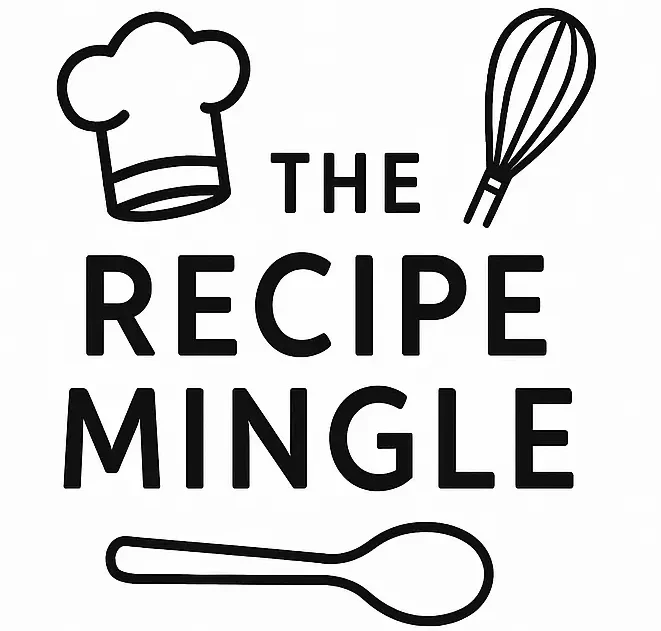
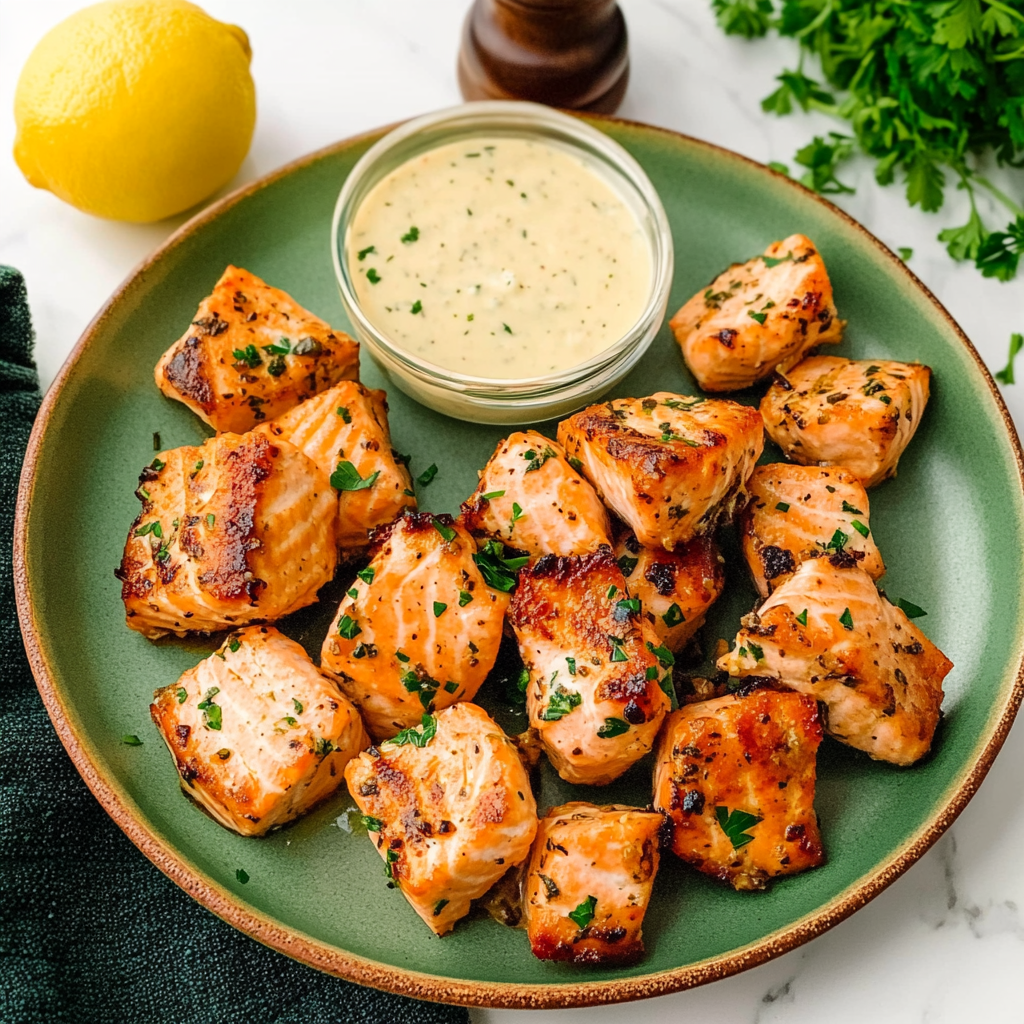

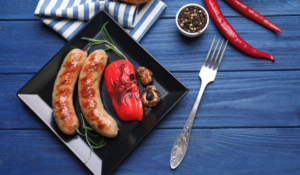
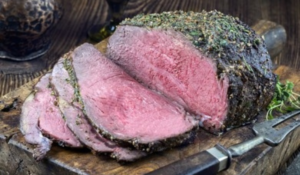
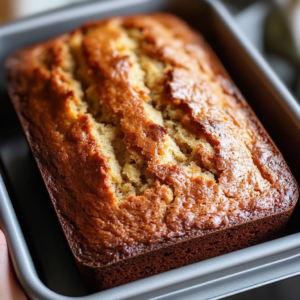
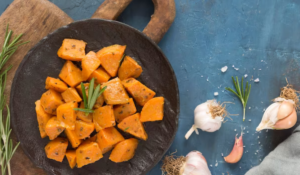
3 thoughts on “Salmon Bites Recipe: Easy, Flavorful Steps for Perfect Appetizers”
Comments are closed.